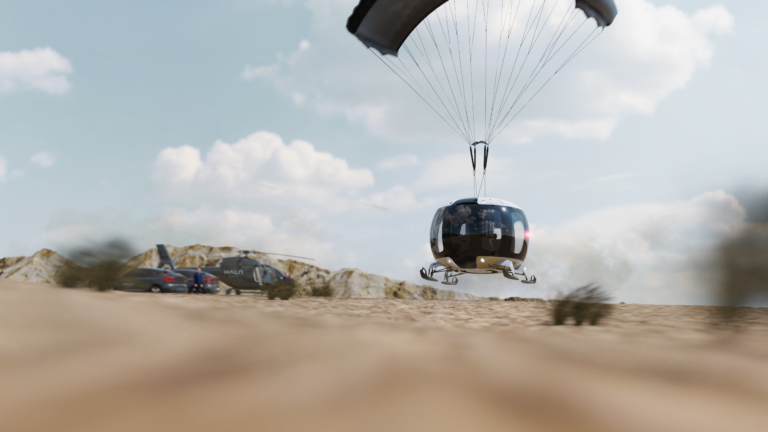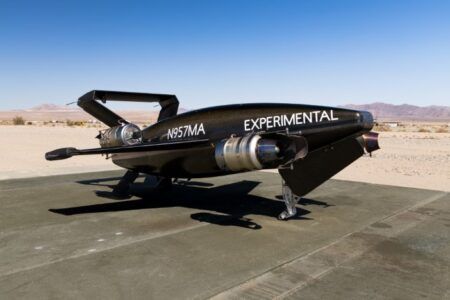HALO Space has met the first major operational milestone of its project.
The space tourism startup completed fabrication and assembly of the first prototype of its capsule late last week.
On Monday, the capsule was disassembled, packed and it’s now in transit to Hyderabad, India, home of the Tata Institute of Fundamental Research (TIFR), where it will make its first test flight in December.
The first flight will be unmanned and will be used to collect important data about the capsule, the
stratosphere and the navigation system, which will be decisive for future trips.
This first capsule prototype, with a capacity for nine people (eight passengers plus the pilot), weighs 800 kilograms and has a diameter of 5 meters wide and 3.5 meters high. It is made up of eight segments designed like orange segments, attached to a base and a roof. The material used for its manufacture is carbon fibre with an opaque hue. The final design will have panel windows in each segment and space tourists will have a 360º view of the exterior.
Upon arrival at TIFR, HALO Space technicians will reassemble the prototype capsule, prepare it with
cameras and various technologies for the collection of flight navigation data, and prepare it for its first
liftoff to a maximum of 40 kilometers into the stratosphere, a journey that will last approximately six
hours until landing.
HALO Space is a space tourism project driven by Carlos Mira, founder and CEO, and Alberto
Castrillo, chief technology officer (CTO), who lead a team of 22 top-level executives from various
companies in different sectors, such as CT Engineering Grau, Aciturri, GMV and TIFR Balloon
Facility.
The company is working to become a benchmark in the near-space aerospace tourism sector
(up to a maximum altitude of 40 km) and has set itself the target of making 400 commercial trips and
carrying 3,000 passengers a year from 2029 onwards. The ticket price will be between US$100,000 and
US$200,000.
“We are working according to the roadmap we have set,” said Carlos Mira, founder and CEO of HALO Space. “With the manufacture of the capsule, we have succeeded in completing a very important milestone in our plan. We have already succeeded in bringing the project to fruition. Next month we will reach another very important milestone: our first test flight.
“We have a great team of professionals and experts. We are very grateful to all those companies that have made this first milestone possible.”
Alberto Castrillo, chief technology officer of HALO Space said, “The first milestones of projects of this importance are always complicated. But we have managed to manufacture and assemble this prototype capsule in a timely manner. It only resembles the final capsule in the shape it has, but the information that the first test flight will give us will be fundamental for the evolution of the project and navigation at various altitudes.
“HALO Space’s project is attractive because it represents the union between the aerospace and tourism sectors, both from the engineering point of view and the variety of equipment, which allows us to offer a unique and incomparable experience.”
The Balloon Facility at TIFR, HALO Space’s strategic partner for the manufacturing of the balloon, has
a track record of more than 500 scientific balloons successfully launched. The company is now
ready to start a series of test flights, which are an essential part of the development and certification
of its program.
After this first performance in India, HALO Space has chosen Spain as the scenario for
its second test flight.





